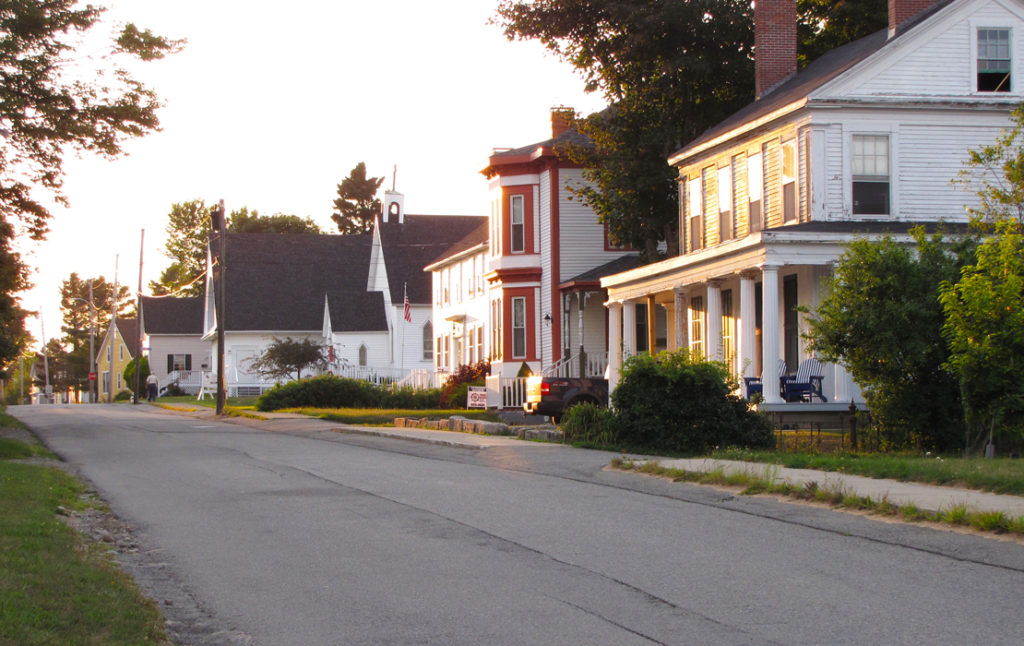By Patricia Oh
Maine’s older residents aren’t waiting around, hoping that someone will make their towns and cities more livable. They are using their knowledge, skills, and creativity to spearhead a national movement to make Maine communities great places to live for all ages—from toddlers to centenarians.
Sixty-six Maine cities and towns have joined the AARP Network of Age-Friendly States and Communities (AARP NAFSC). That is more than in any other state in the U.S.! Many Maine communities are taking an age-friendly approach but have not formally joined the AARP NAFSC.
It isn’t surprising that Maine is leading the nation. We are the oldest state in the Union, with a median age of 44.3. The movement isn’t just about demography, though. Mainers have a long history of using Yankee ingenuity to tackle community challenges.
An age-friendly community is not just a great place to grow older. It is a great place for all ages to live, work, play, and do business. The aging of the population is an opportunity to think differently about community and economic development. We have to plan so that children, young families, and Mainers in their 90s and beyond have the opportunity to live rewarding, productive, and safe lives.
Age-friendly planning builds on community strengths to make improvements in eight aspects of community life that are essential for the health and well-being of all residents.
Communities thrive when residents can meet their needs in the first five areas:
· outdoor spaces and buildings
· housing
· transportation
· community support and health services
· communication and information.
The next three areas of livability—social participation, respect and social inclusion, and civic participation and employment—encourage people to be as engaged in the civic, social and economic life of the community as we want to be.
Maine has many examples of work our communities have done in the eight aspects of community life. These are a few of the low-cost ideas that volunteers are spearheading:
· Blue Hill, Georgetown, and Deer Isle secured grant funding to develop accessible trails.
· Readfield, Mount Vernon, Biddeford, and Cumberland formed volunteer home chore and maintenance teams.
· Old Orchard Beach and Wayne worked with the Maine Department of Transportation and other partners to make pedestrian crossings safer.
· Sullivan and Raymond started a community garden with raised beds to increase access to healthy food. Saco and Eastport have increased access to commodity food packages for residents 60-plus.
· Bowdoinham and Dover-Foxcroft are re-purposing historic buildings to create accessible community centers.
· In Waldo County, the committee partnered with libraries and local businesses to address social isolation.
· The Living Well in North Yarmouth First Greeter program welcomes newcomers to the community with information—including volunteer opportunities.
All of the initiatives encourage older folks to get out and about but they also make life safer and more fun for everyone.
The first step in the age-friendly process is to form a core team that includes older volunteers who understand the community. The next step is to identify community strengths, to learn what residents need, and the kinds of changes people prefer. The results inform the age-friendly action plan.
The work of each age-friendly committee is as different as the community. For example, to encourage civic engagement, the teams in Bucksport and Bangor award a Golden Shovel to the business that does the best job of clearing sidewalks during the winter months. Portland and Augusta have implemented an age-friendly business program. Bucksport’s Show You Care campaign works to make local businesses more accessible. Kennebunk partnered with the Chamber of Commerce to host a job fair for older residents.
Older residents, working with their municipal leaders and regional partners, are making our cities and towns into great places for all generations. AARP Maine supports communities that join the AARP NAFSC by providing technical assistance, networking opportunities, an annual challenge grant competition that funds “quick-action” change in the community, and a host of tools and resources.
In addition to AARP Maine, other organization are committed to supporting age-friendly community development. The Maine Center on Aging and the Maine Community Foundation have partnered on a Lifelong Community project to provide funding and resources to Maine’s age-friendly community movement.
For more information about the AARP network of age-friendly communities, see: AARP.org/livable or email me@aarp.org.
Patricia Oh is an age-friendly community consultant.





